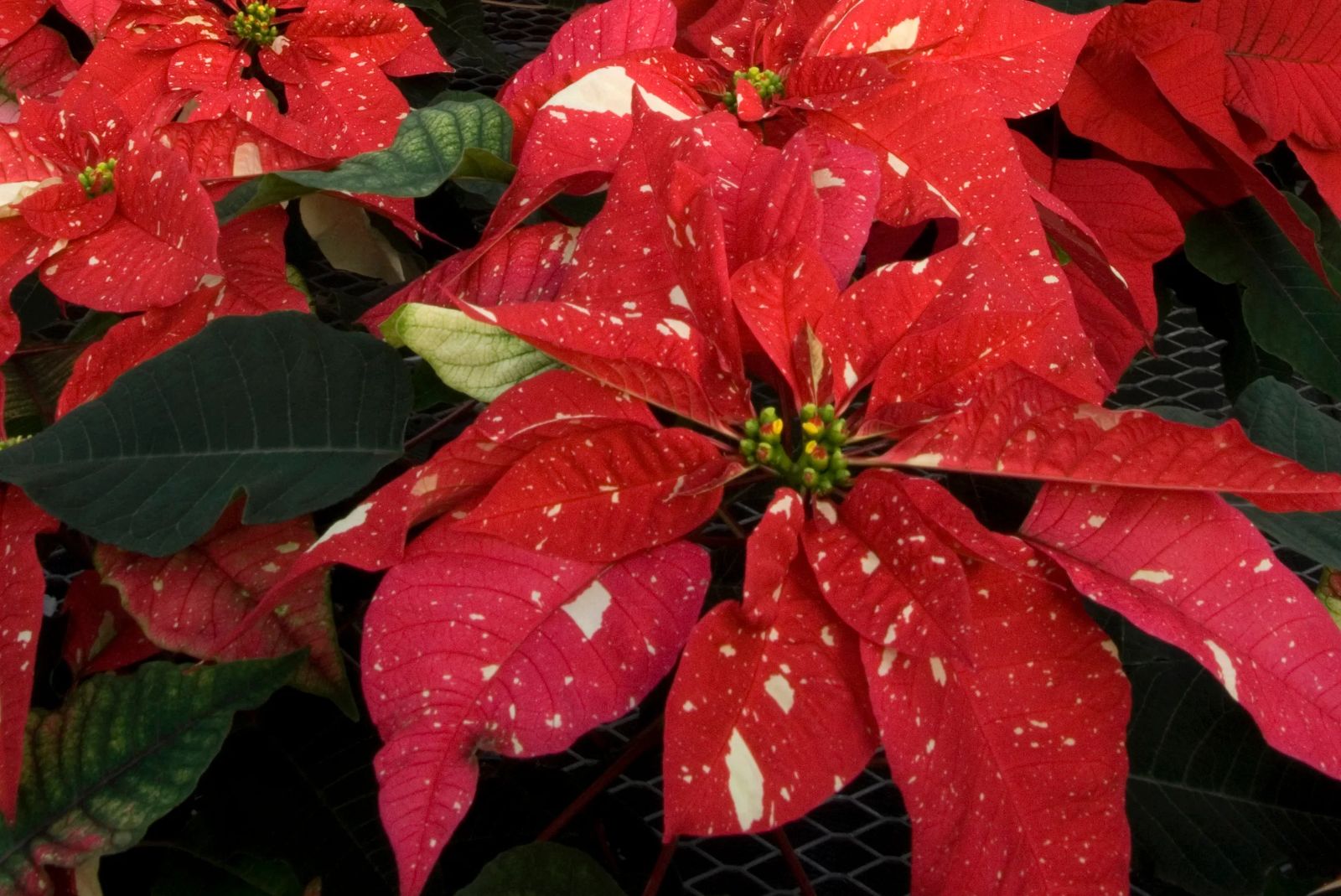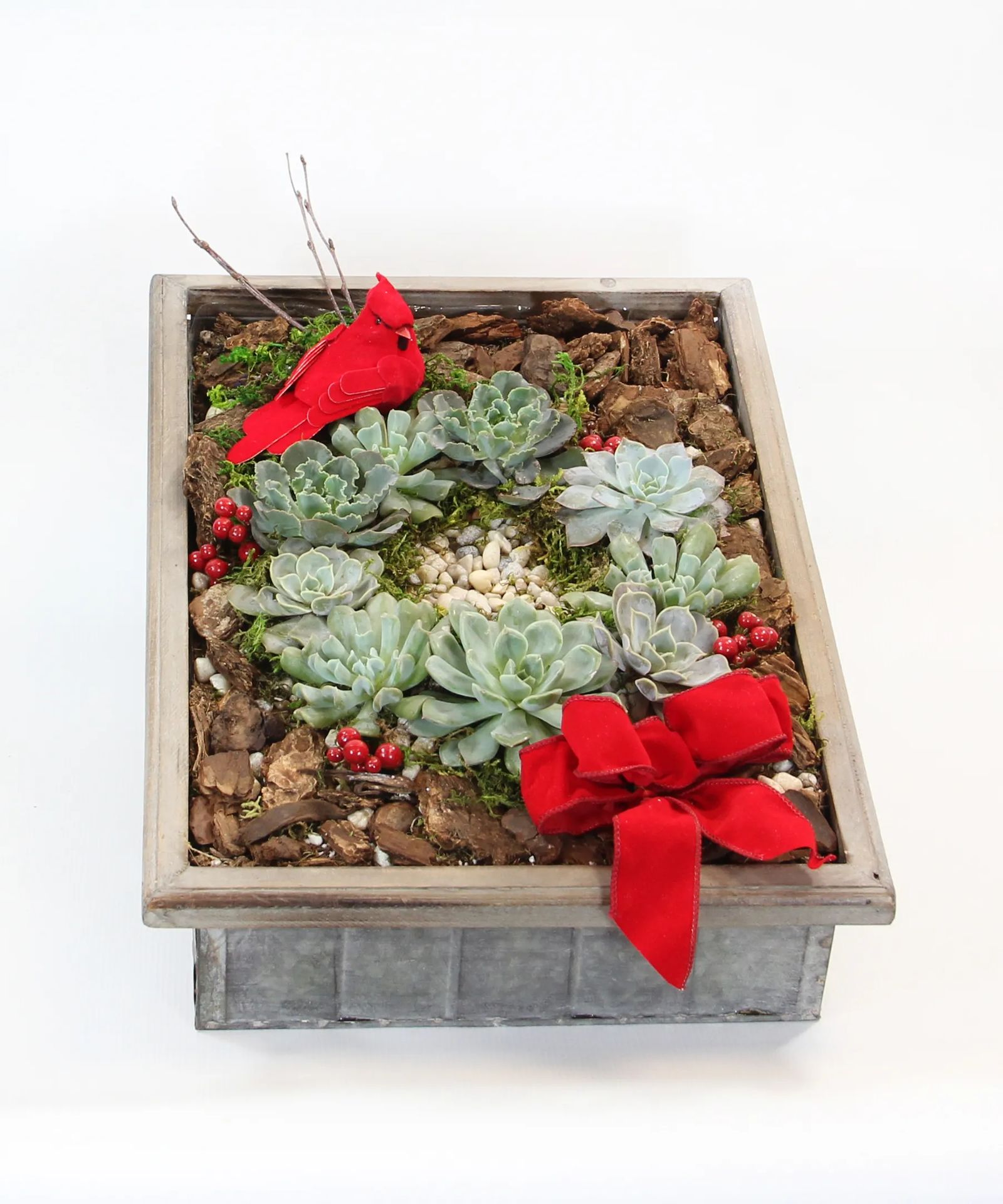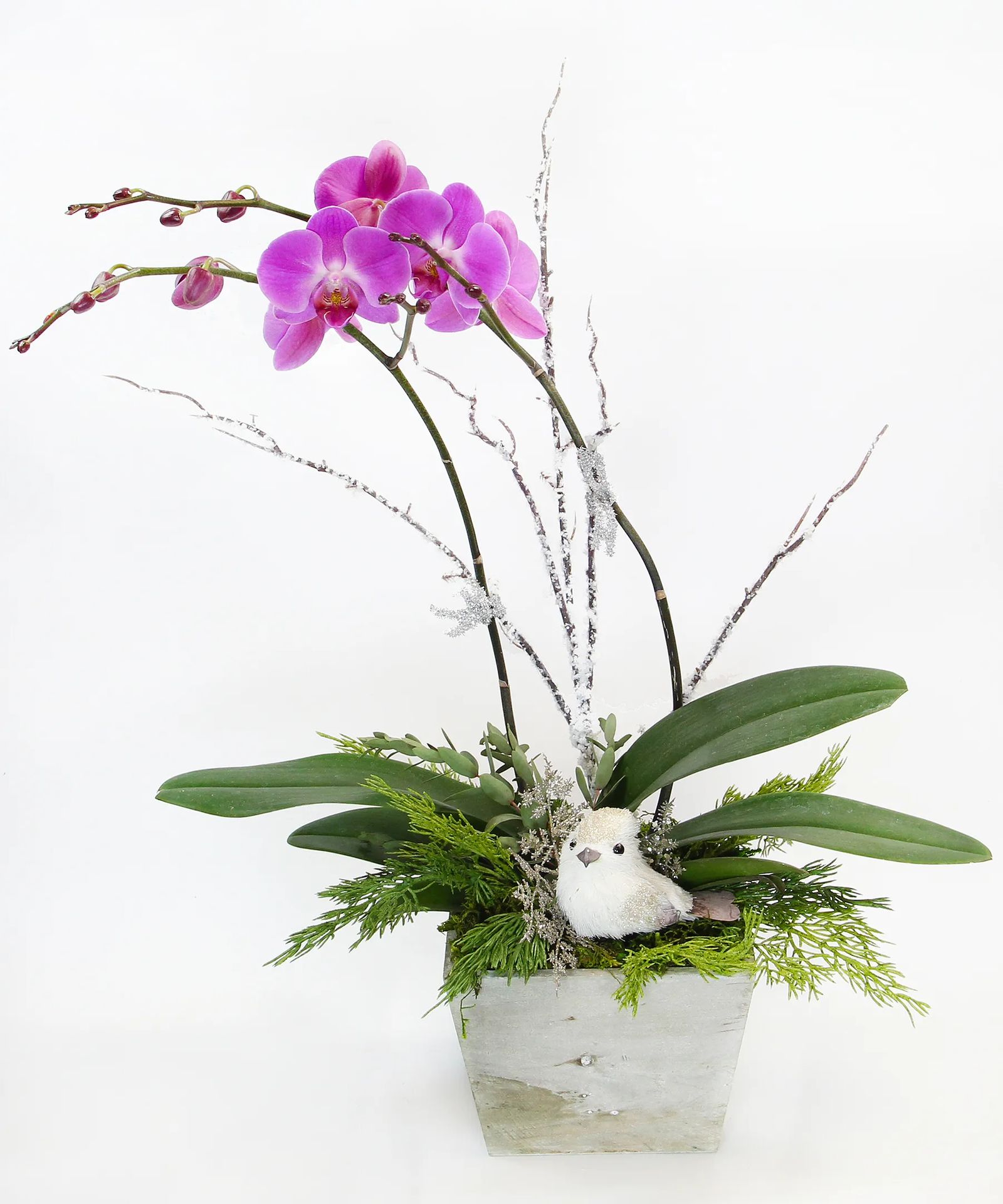
Light up the Season with Festive Plants
Traditional to modern, they make the best gifts
You've got the Christmas tree, the holiday cookies and even the presents wrapped in holiday style. Why not spark a new tradition by looking to some colorful ways to give a little cheer with a Christmas Plant. From the traditional poinsettia to the ever popular succulent, there's sure to be one that will make the perfect gift!
Poinsettia
With sales in the US alone estimated at 35 million plants, the poinsettia is the most popular blooming plant each holiday season. You'll find the traditional red leaves to shades of pink, white, and burgundy along with many unusual novelty colors sporting names like Christmas Beauty (apricot/dark pink), Superb New Glitter (red with white spots and splashes) and Christmas Beauty Queen (coral with red specks).
To choose the perfect poinsettia pick a plant with small, tightly clustered buds in the center. Look for crisp, bright, undamaged foliage and avoid plants displayed in drafty or crowded areas.
To keep the poinsettia looking good, water thoroughly when the surface soil is dry to the touch and discard excess water. High humidity is preferable and be sure to place the plant away from hot or cold drafts, and protect from cold winds.

Amaryllis
Whether sold as a kit or as a plant that is already growing, the amaryllis and its showy blooms add a festive touch to any home.Start by planting bulbs in a potting medium leaving the neck exposed. Water sparingly until the stem appears, gradually increasing the water as the bud and leaves appear. Don't overwater, since this encourages rot. The stem will grow rapidly with flowers developing after it reaches its full height.
After enjoying the prolific show, cut the old flowers off the stem and let the stalk die back naturally before cutting it away from the bulb completely. Continue to water and fertilize regularly as the leaves grow. They are feeding the bulb for next year's growth.
After the leaves die, cut them off, leaving two inches from the top of the bulb. Remove the bulb from the soil, and store it in a cool (40-50°F) dark place for a minimum of six weeks.
Check the calendar and plant the bulbs again about eight weeks from the time you want them to bloom. Plant the bulbs in a pot leaving about one inch of space between the bulb and the edge of the pot. Place in an area that receives bright indirect light and get ready for the show again.

Succulents
Succulents continue to be very “in,” and it’s easy to see why. They are extremely versatile, low maintenance and visually pleasing. The shapes range from tall fleshy spines to smooth flat rounded leaves with colors ranging though gray, lavender, dark reds and all shades of green.
Succulents prefer high to high-filtered light. In Montana, a southern or western windowsill that provides direct sun part of the day is ideal. They also can be placed outdoors during the summer. Place them in a partial shade area for the first few days to allow them to get acclimated to the outdoors.
During their growth season, March to September, cacti and succulents can grow prolifically and proper watering is important. They absorb water rapidly, so the soil needs to be kept slightly moist. During the fall and winter, apply only small amounts of water to moisten the soil around the roots allowing the soil to become dry before watering again. A well-draining soil is a must and plants must never be permitted to stand in water. This will lead to root rot.
Avoid fertilizing during the dormant season. During the growing season, feed with a water-soluble all-purpose fertilizer. Mix it at half-strength and fertilize every other time you water.
Succulents and cacti like to be slightly pot bound, so repot only as needed. The best time is in April, just as they are coming out of dormancy to start their new growth. Repot into a container only slightly larger than the current one with good drainage. If the container is too large for the plant, the soil will stay moist and this could lead to rot.

Phalaenopsis Orchid
With exotic long-lasting blossoms, it's no surprise that orchids have become one of the most popular purchases by consumers, second only to poinsettias.
Orchids are the largest family of flowering plants in nature with new species being discovered every year. Every country in the world and every state in the United States, including Alaska, has native orchids and there are over 100,000 registered hybrids. What does this mean? That there is an orchid out there for you.
The best overall performer for growing inside the home is the phalaenopsis. Phalaenopsis (fail-ee-nop-sis) orchids are found in tropical areas growing in the bark of a tree. The moisture varies from heavy to dry, depending on the season. High winds are also present at times.
We recommend placing the orchid in an area with good air circulation, humidity, in bright light with no direct sun like an east, west or shaded south window.
The hardest component to properly achieve in our area is humidity. Place the orchid on a bed of pea gravel or decorative stones in a saucer and fill with some water. The humidity will increase in the little ecosystem that has been created and provide an environment for success. Bathrooms with good light are great, but the humidity from a shower is only advisable in the morning. The water during the rest of the day has to have enough time to evaporate from the leaves of the orchids. If you are a "shower-at-night person", the kitchen counter works well also because of the humidity created from washing dishes.









